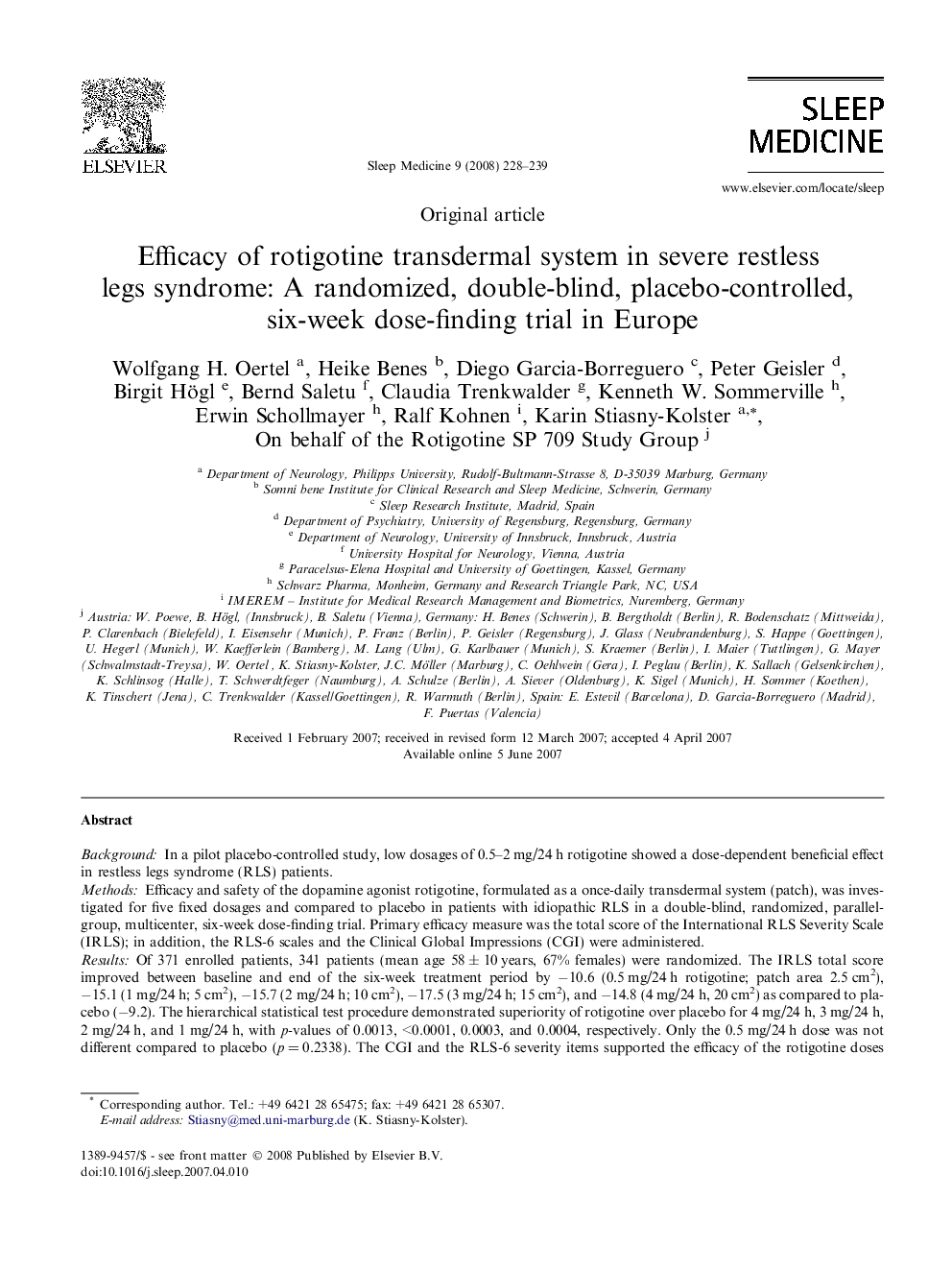| Article ID | Journal | Published Year | Pages | File Type |
|---|---|---|---|---|
| 3178055 | Sleep Medicine | 2008 | 12 Pages |
BackgroundIn a pilot placebo-controlled study, low dosages of 0.5–2 mg/24 h rotigotine showed a dose-dependent beneficial effect in restless legs syndrome (RLS) patients.MethodsEfficacy and safety of the dopamine agonist rotigotine, formulated as a once-daily transdermal system (patch), was investigated for five fixed dosages and compared to placebo in patients with idiopathic RLS in a double-blind, randomized, parallel-group, multicenter, six-week dose-finding trial. Primary efficacy measure was the total score of the International RLS Severity Scale (IRLS); in addition, the RLS-6 scales and the Clinical Global Impressions (CGI) were administered.ResultsOf 371 enrolled patients, 341 patients (mean age 58 ± 10 years, 67% females) were randomized. The IRLS total score improved between baseline and end of the six-week treatment period by −10.6 (0.5 mg/24 h rotigotine; patch area 2.5 cm2), −15.1 (1 mg/24 h; 5 cm2), −15.7 (2 mg/24 h; 10 cm2), −17.5 (3 mg/24 h; 15 cm2), and −14.8 (4 mg/24 h, 20 cm2) as compared to placebo (−9.2). The hierarchical statistical test procedure demonstrated superiority of rotigotine over placebo for 4 mg/24 h, 3 mg/24 h, 2 mg/24 h, and 1 mg/24 h, with p-values of 0.0013, <0.0001, 0.0003, and 0.0004, respectively. Only the 0.5 mg/24 h dose was not different compared to placebo (p = 0.2338). The CGI and the RLS-6 severity items supported the efficacy of the rotigotine doses beyond 0.5 mg/24 h. The most frequent side effects were application site reactions and nausea and tended to be more frequent with higher doses.ConclusionsThis dose-finding trial identified the range for a maintenance dose of rotigotine from 1 mg/24 h to 3 mg/24 h. The lowest dose was ineffective and, with the highest dose, no additional benefit was observed.
